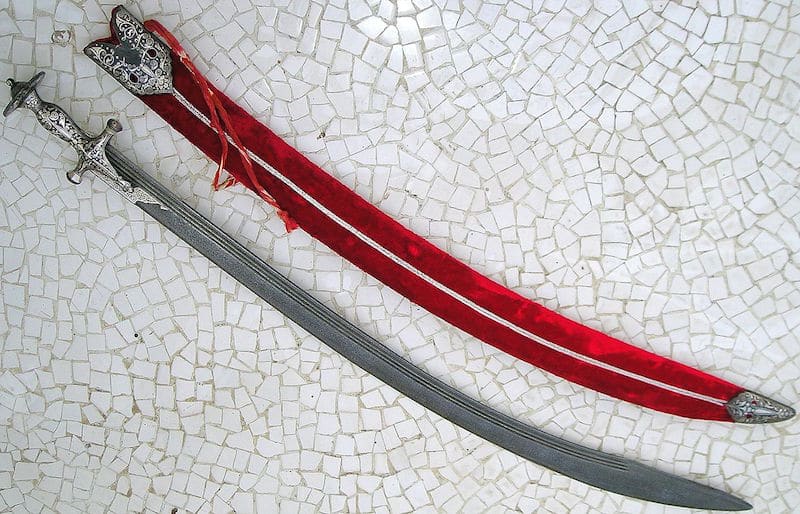
Forged in Fire this week on History sees the finalists having to recreate the sacred but deadly talwar sword.
Here we look back at the history of the blade and it’s significance.
The talwar, which also sometimes features the alternative spelling talwaar or tulwar, comes historically from the Indian Subcontinent and is a long and narrow single-handed curved sabre.
It was used by both cavalry and infantry, and it’s thought it would generally have been used in a thrusting motion, and also for cutting. Due to its small and cramped hilt it was not easy to use in a slashing motion.
It was found in what is modern-day India, Pakistan, Bangladesh and Nepal, and shares its roots with the Persian shamshi, the Afghan pulwar, the Arab scimitar and the Turkish Kilij.
They are all derivatives of earlier versions of the curved swords of Turkic Central Asia, and are often confused.
All the above are slightly different however, with the shamshir for example being far more curved while the talwar is generally wider.
But as with most weaponry the Talwar comes in a huge number of varieties, with some very close to the other weapons, like the kilij, above.

Some vary drastically from the standard with some even having double-pointed tips. One trend that most of them have, though, is that they are straighter towards the hilt and more curved towards the tip.
They often also get wider the closer you get to the tip, though not by a significant amount. Often the blade would contain fullers — also called “blood grooves” — which despite the gory nickname were used to make it lighter.
It’s thought that the talwar may have played a part in the design of the British sabre.
The most standard hilt for the talwar is called a “disc hilt”, with a flange in the shape of a disk around the pommel (the bottom of the hilt, at the other end from the guard).
The disks also regularly have a small spike coming out of the bottom, while the guard is often very basic and featuring a straight-forward cross joint.
The spike was used as a last resort to attack someone in close combat when the blade was no longer of use.
Generally the hilt is made from iron, although there are varieties made from brass and silver. A strong resin is used to attach it to the tang (the foot of the blade that connects to the handle).
The talwar’s sheath is normally made of wood or metal covered by either leather or cloth. Both the hilt and the blade could, like the shamshir, be ornately decorated.
Forged in Fire airs Tuesdays at 9/8c on History.